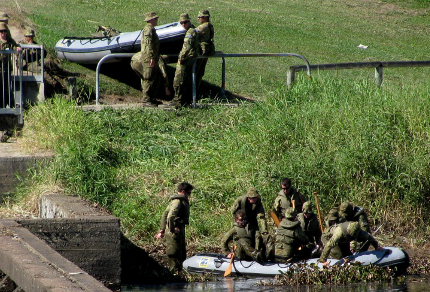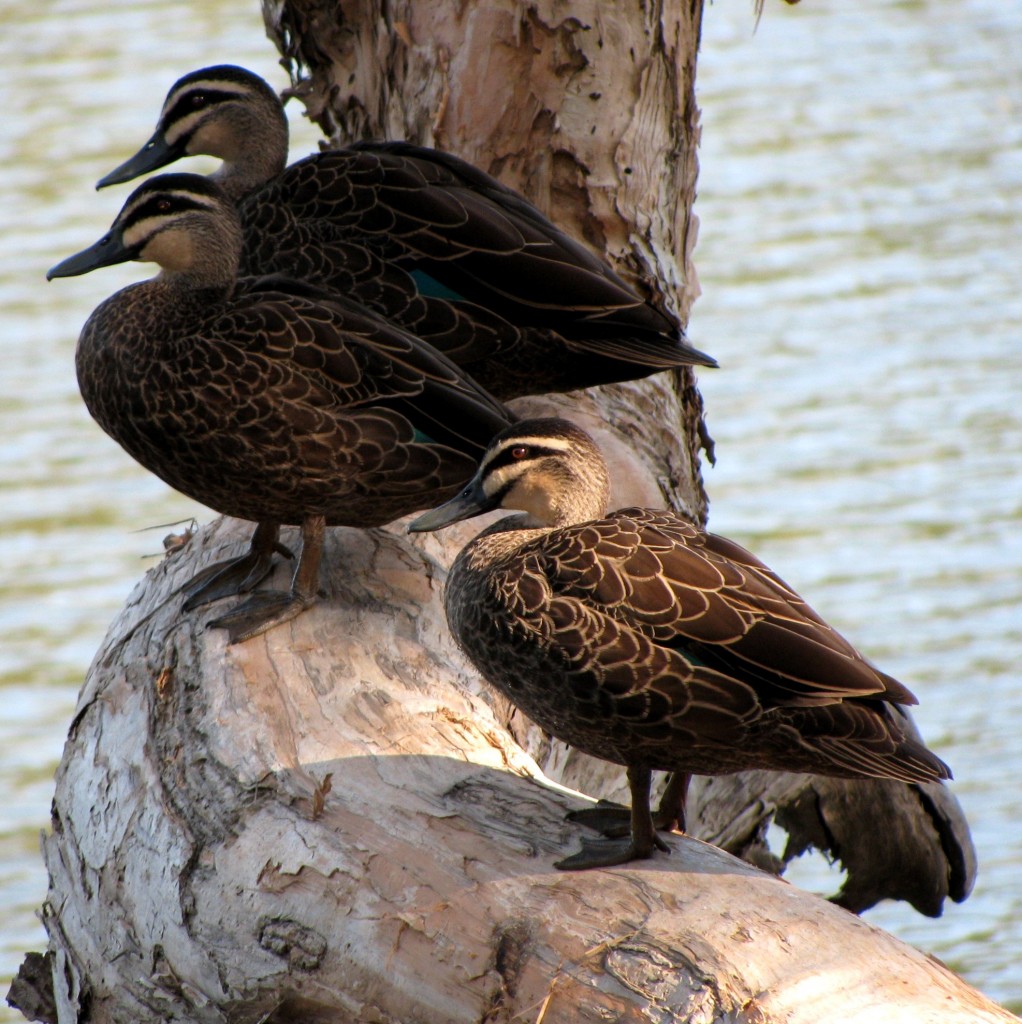
Pacific Black Ducks (© Magi Nams)
I wore a light sweater to ward off the distinct chill of this Dry Tropics winter solstice morning as I cycled to Gleeson’s Weir in search of freshies – that is, freshwater crocodiles. I hoped to observe them basking in the early sunshine, their means of increasing body temperature and speeding up sluggish reptilian metabolism sufficiently to enable them to hunt. Disappointingly, I saw no freshies on the rocks below the weir, but chatted with a photographer who’d come to the weir for the same purpose as had I. He showed me photographs of freshies he’d taken at this site in the past.
While birding my way home, I did spot Pacific black ducks basking on the shore of the river and perched on a curving paperbark trunk leaning out over the water, and numerous songbirds sunning in the treetops. In a bright clearing, yellow-bellied sunbirds hovered in front of red blossoms on mounds of a trailing vine, inserting their long, curved bills into the trumpet-shaped corollas to harvest nectar. Krefft’s turtles hung in still water the colour of yellow ochre in a stagnant creek, and some of Australia’s finest dressed in camouflage carried an inflatable boat from the sunlit shore of the Ross River below Aplin’s Weir to the riverbank above the weir.
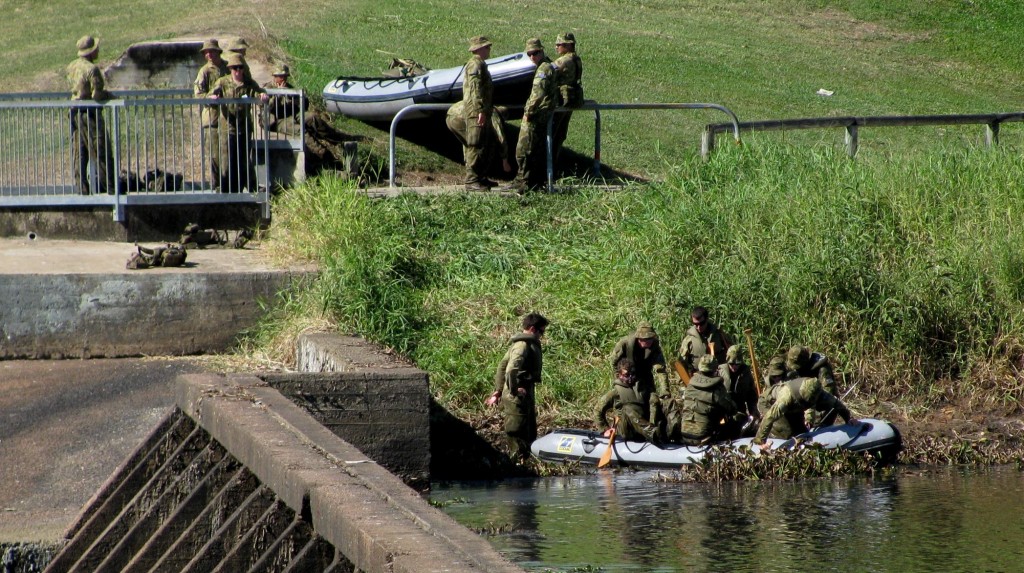
Troops from Lavarack Barracks at Aplin’s Weir (© Magi Nams)
Townsville is home to Australia’s largest army base, Lavarack Barracks1 at the foot of the slopes of Mount Stuart near James Cook University. That’s the base that uses all of Mount Stuart as a training area, with the exception of the access road to the peak, the Rotary Lookout, and the small nature reserve on the peak. Townsville is also home to Royal Australian Air Force Base Townsville and is regularly visited by Australian Navy ships that coordinate with land combat troops.1 During the past few weeks, Townsville residents have been subjected to mega-decibel flybys of fighter jets practising maneuvers. Today, the army was showing its stuff. A second pod of soldiers carried another inflatable boat to the top of the weir, and I watched the first group set forth on the river, paddling upstream. In the beautiful setting of the Ross River Parkway, it was difficult to envision military destruction being meted out by enemy forces, but if that should occur, Australia will be ready.
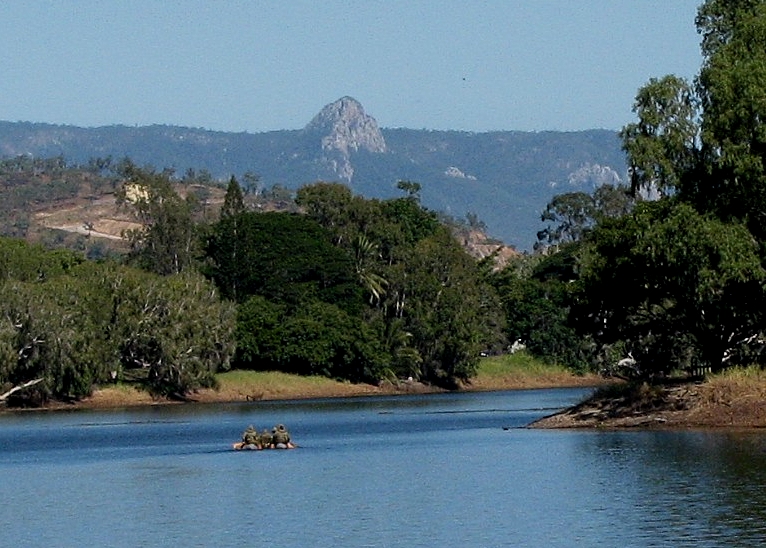
Army Troops on Ross River (© Magi Nams)
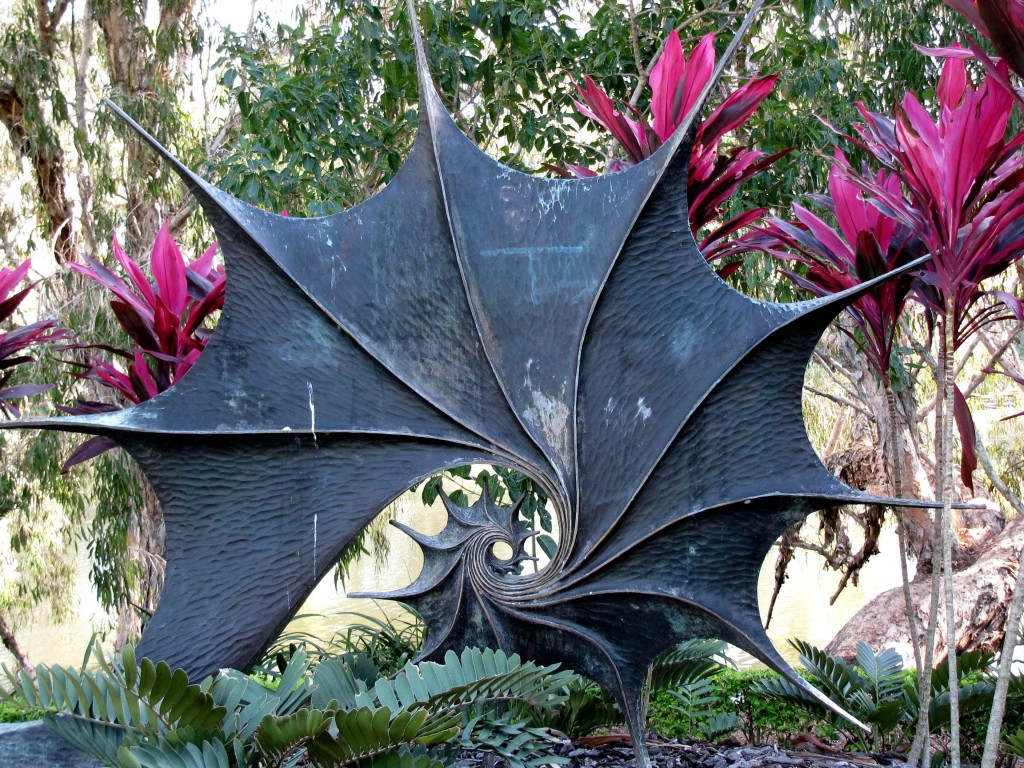
Sculpture near Gleeson’s Weir (© Magi Nams)
Today’s birds: magpie-larks, masked lapwings, rainbow lorikeets, willie wagtail, welcome swallows, Brahminy kite, spangled drongos, rainbow bee-eaters, great bowerbird, brown honeyeaters, yellow honeyeater, white-bellied cuckoo-shrikes, figbird, grey fantail, Pacific black ducks, white-throated honeyeater, peaceful dove, emerald dove, yellow-bellied sunbirds, sulphur-crested cockatoo, forest kingfisher, comb-crested jacana, helmeted friarbird, Australian brush-turkey, nutmeg mannikins, blue-winged kookaburras, sacred kingfisher, tree martins, little egret, intermediate egret, white-gaped honeyeater, rufous-throated honeyeater. Also, Krefft’s turtles.
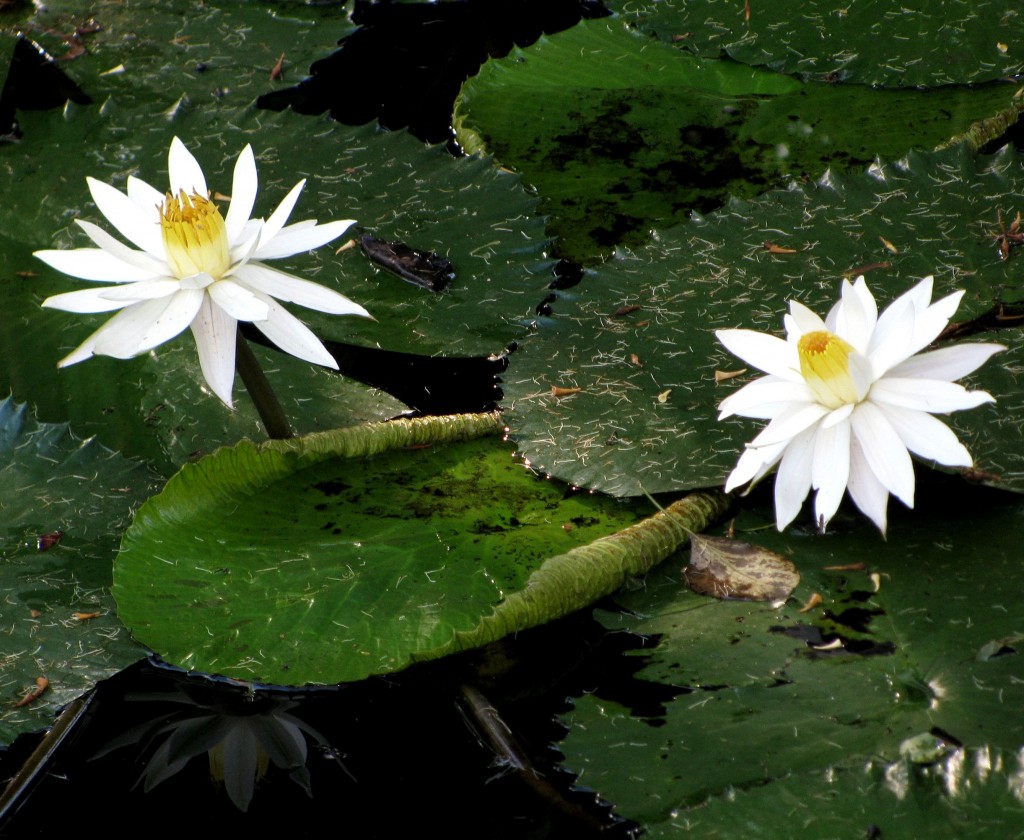
White Water Lilies, Ross River (© Magi Nams)
Reference:
1. Northern Services Courier Defence Newspaper. Home Page. ©2006. Accessed 28-Jun-2010. http://www.nscnews.com/

